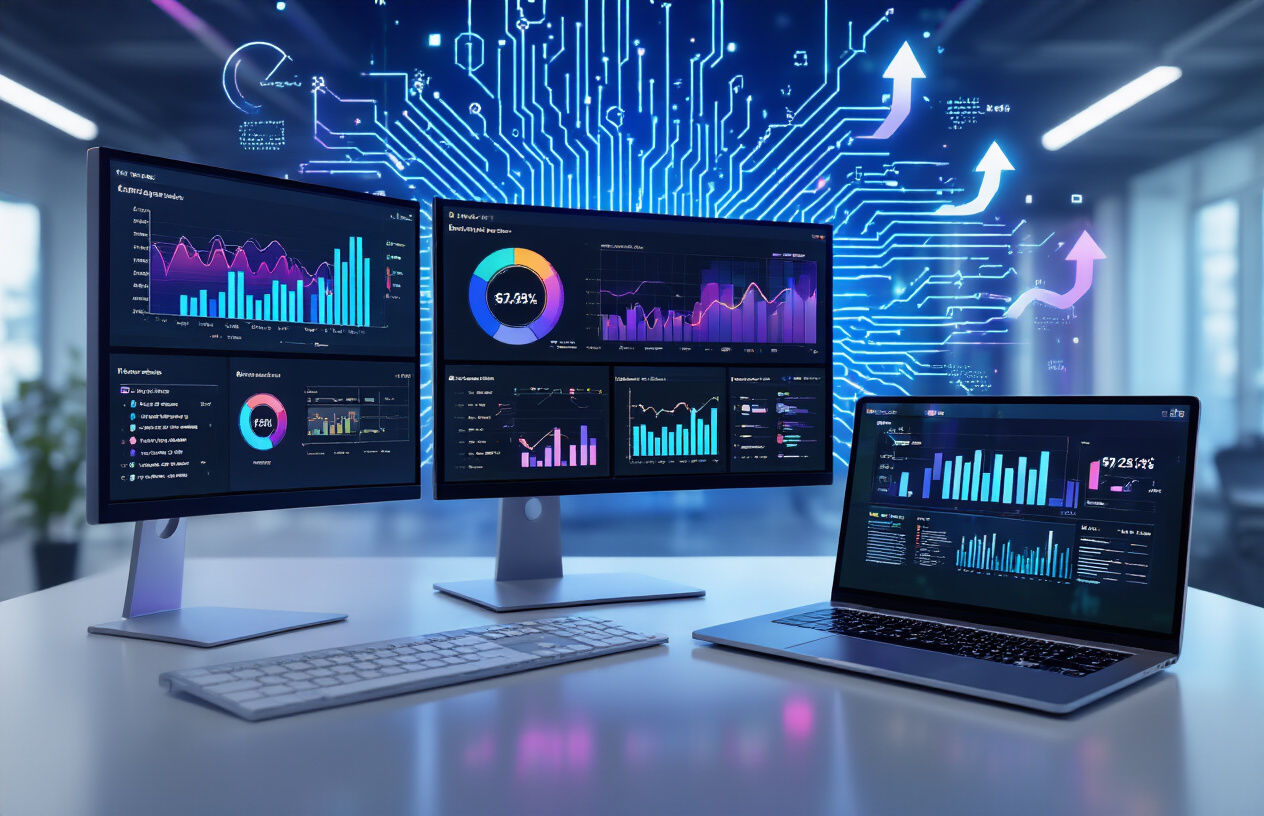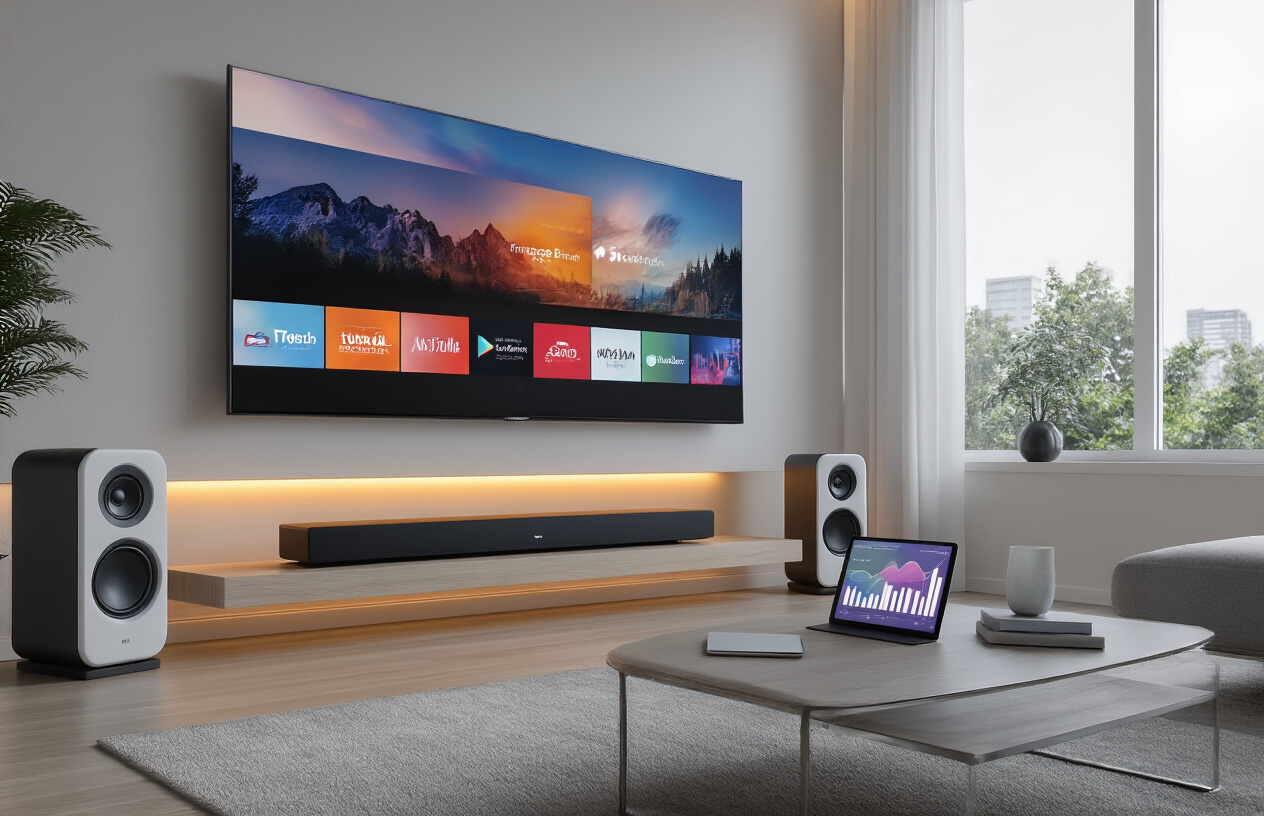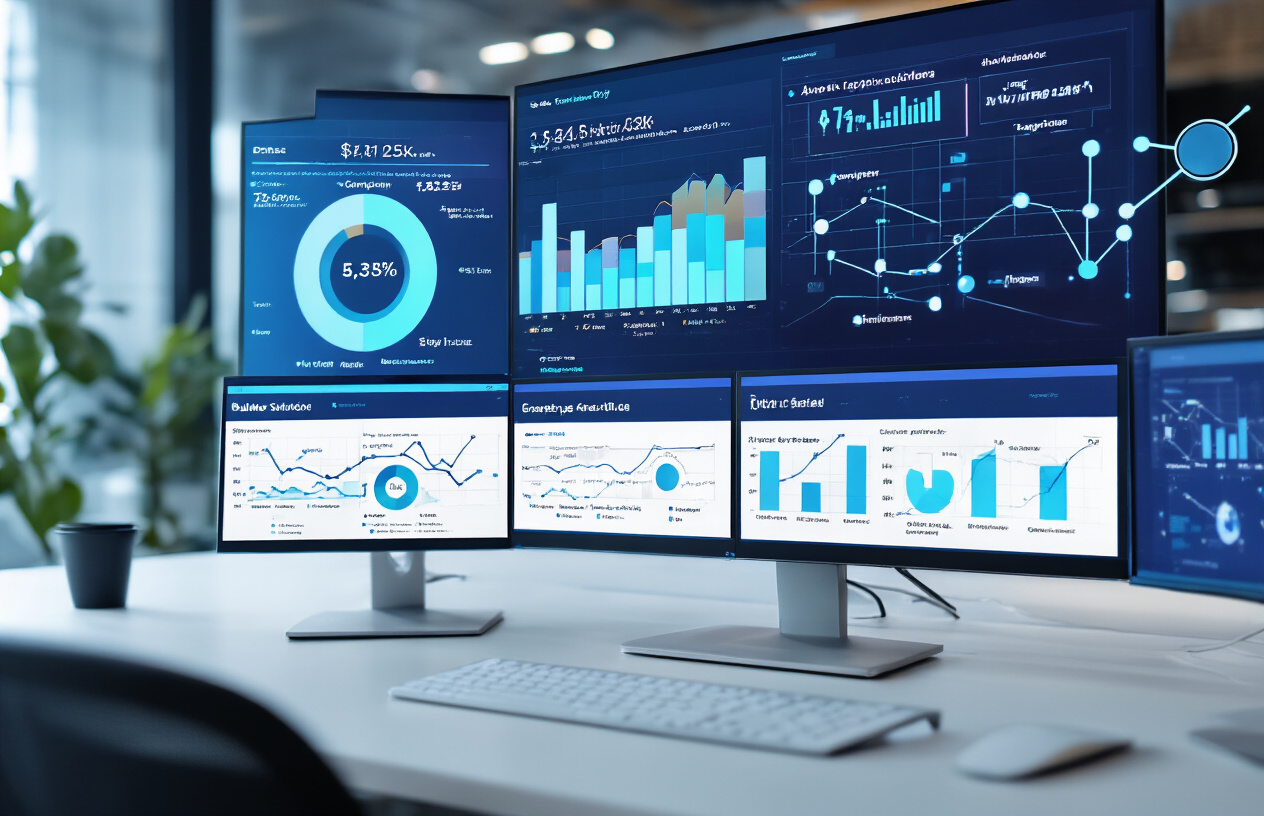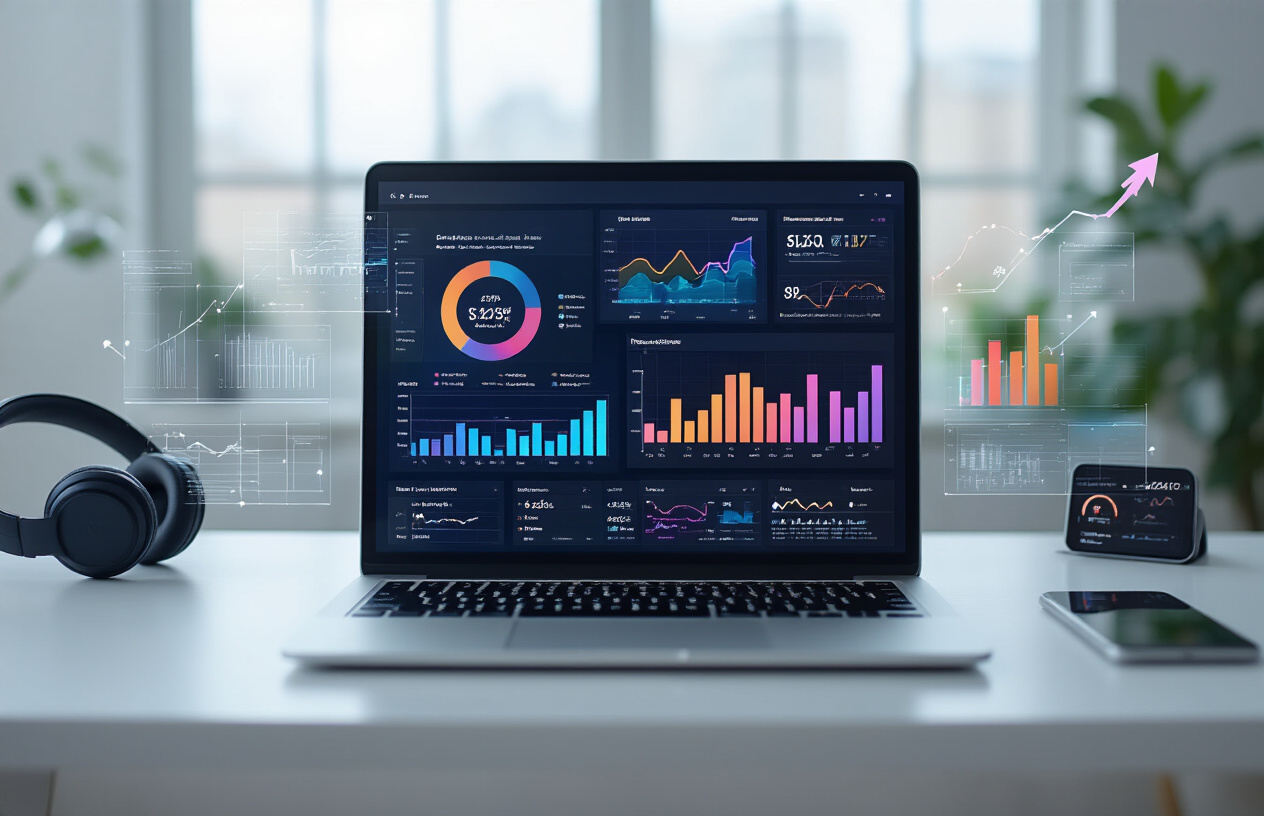
Programmatic advertising is evolving fast, and 2025 brings changes that will reshape how you buy media. Media buyers, performance marketers, and advertising professionals need to stay ahead of these shifts to remain competitive and deliver results for their clients.
The industry is moving away from traditional targeting methods while embracing smarter automation tools. New privacy regulations are forcing advertisers to rethink their strategies, and emerging channels are capturing bigger portions of marketing budgets.
This guide covers three major trends reshaping programmatic buying: AI-powered optimization tools that automatically improve your campaign performance, privacy-first targeting strategies that work without third-party cookies, and the explosive growth of connected TV and audio advertising that’s pulling spend from traditional display formats. You’ll learn what these changes mean for your campaigns and how to adapt your buying strategies for success.
AI-Powered Optimization Transforms Campaign Performance

Machine Learning Algorithms Deliver Real-Time Bid Adjustments
Programmatic advertising has reached a new level of sophistication where machine learning algorithms make split-second bidding decisions that would be impossible for human media buyers to execute manually. These AI systems analyze hundreds of variables simultaneously – from user demographics and browsing history to device type and current weather conditions – to determine the optimal bid price for each impression.
The speed advantage is game-changing. While traditional bidding strategies might adjust campaigns hourly or daily, ML algorithms react within milliseconds. They continuously monitor performance metrics like click-through rates, conversion probabilities, and cost-per-acquisition targets, automatically increasing bids for high-performing placements and reducing spend on underperforming inventory.
Modern platforms like Google’s Smart Bidding and Amazon’s DSP use neural networks that learn from millions of auction outcomes. These systems identify patterns that human analysts might miss, such as subtle correlations between user behavior and purchase intent. For example, they might discover that mobile users browsing during lunch hours on weekdays convert 30% better for specific product categories, automatically adjusting bids accordingly.
Predictive Analytics Forecast Audience Behavior with 90% Accuracy
The ability to predict consumer behavior before it happens has transformed how media buyers approach campaign planning. Advanced predictive models now achieve accuracy rates of 90% or higher when forecasting key metrics like conversion likelihood, lifetime customer value, and churn probability.
These systems combine first-party data with external signals to create comprehensive user profiles. They analyze purchase history, website interactions, social media activity, and even offline behaviors to predict future actions. A retail brand might identify that customers who view product pages for more than two minutes on mobile devices are 85% likely to make a purchase within 48 hours.
The practical applications are extensive:
- Lookalike audience creation: AI identifies the most valuable customer segments and finds similar prospects across the entire addressable market
- Seasonal demand forecasting: Algorithms predict inventory needs and budget allocation months in advance
- Churn prevention: Systems flag at-risk customers before they disengage, triggering targeted retention campaigns
- Cross-sell opportunities: Predictive models recommend complementary products based on purchase patterns and browsing behavior
Automated Creative Testing Eliminates Guesswork from Ad Performance
Creative testing has evolved from a manual, time-intensive process to an automated system that continuously optimizes ad performance without human intervention. AI-powered creative optimization platforms can test thousands of ad variations simultaneously, identifying winning combinations in real-time.
These systems automatically adjust creative elements based on audience segments and performance data. They might show carousel ads to users who engage with multiple product images while serving video content to audiences with high video completion rates. The technology goes beyond simple A/B testing to create personalized creative experiences for individual users.
Dynamic creative optimization (DCO) platforms analyze which headlines, images, call-to-action buttons, and color schemes perform best for different audience segments. They automatically combine high-performing elements to create new ad variations, then test these against existing winners. This continuous cycle means campaigns improve performance throughout their duration rather than plateauing after initial optimization.
Smart Budget Allocation Maximizes ROI Across Multiple Channels
AI-driven budget allocation systems have replaced static spending plans with dynamic resource distribution that responds to real-time performance data. These platforms continuously reallocate budgets across channels, campaigns, and audience segments to maximize overall return on investment.
Smart allocation algorithms consider multiple factors when distributing spend:
| Factor | Impact on Allocation |
|---|---|
| Cost per acquisition trends | Higher performing channels receive increased budget |
| Audience saturation levels | Budget shifts when frequency caps are reached |
| Competitive landscape | Increased investment during low-competition periods |
| Seasonality patterns | Automatic adjustments for peak performance windows |
The systems learn from historical data to predict optimal spending patterns. They might reduce social media spend during low-engagement periods while increasing search advertising when conversion rates are highest. This automated approach ensures budgets are always working at maximum efficiency, often improving campaign ROI by 25-40% compared to manual allocation methods.
Cross-channel optimization has become particularly sophisticated, with AI systems understanding how different touchpoints work together in the customer journey. They allocate budgets not just based on individual channel performance, but on how each channel contributes to overall conversion goals.
Privacy-First Targeting Strategies Replace Third-Party Cookies

First-Party Data Collection Builds Stronger Customer Relationships
Media buyers are discovering that losing third-party cookies actually opens doors to more valuable customer connections. First-party data collection has become the cornerstone of successful targeting strategies because it’s built on direct customer interactions and consent. When users willingly share their information through newsletter signups, account registrations, or purchase histories, brands gain access to higher-quality data that third-party cookies never could provide.
Smart media buyers are implementing progressive profiling strategies that gradually collect customer information across multiple touchpoints. Instead of overwhelming users with lengthy forms, they’re asking for small pieces of information over time – starting with an email address, then adding preferences, demographics, and behavioral data through ongoing interactions.
Customer data platforms (CDPs) have become essential tools for consolidating this first-party information. These platforms create unified customer profiles by combining website behavior, email engagement, purchase history, and mobile app interactions. The result is a comprehensive view of each customer that enables precise targeting and personalized messaging.
Zero-party data collection represents the next evolution in customer relationships. This involves directly asking customers about their preferences, interests, and intentions through surveys, quizzes, and preference centers. When customers voluntarily share this information, they’re essentially telling brands exactly how to market to them.
Contextual Advertising Returns as Premium Targeting Solution
The advertising world is witnessing contextual targeting’s renaissance as privacy regulations reshape the digital landscape. Unlike behavioral targeting that relies on tracking individual users across websites, contextual advertising matches ads to the content consumers are actively viewing. This approach respects user privacy while delivering relevant advertisements that complement the editorial environment.
Modern contextual targeting goes far beyond simple keyword matching. Advanced natural language processing analyzes page content, sentiment, and context to understand the full meaning behind articles and videos. AI-powered semantic analysis can determine whether a sports article discusses victory or defeat, allowing advertisers to align their messaging with the appropriate emotional context.
Brand safety has become a critical consideration in contextual advertising. Sophisticated content categorization systems help media buyers avoid placing ads next to controversial or inappropriate content. These tools analyze not just text but also images, videos, and user-generated content to provide comprehensive brand safety protection.
The quality of contextual placements often exceeds that of behavioral targeting. When ads appear alongside relevant content, users are already in the mindset to engage with related products or services. This natural alignment typically results in higher engagement rates and better campaign performance than interruption-based advertising methods.
Privacy Sandbox Tools Enable Cookieless Campaign Success
Google’s Privacy Sandbox initiative has introduced several tools that help advertisers navigate the cookieless future while maintaining campaign effectiveness. The Topics API replaces third-party cookies by enabling interest-based advertising through on-device processing, where browsers learn user interests without sharing individual browsing data with external parties.
Protected Audience API (formerly FLEDGE) allows remarketing campaigns to function without traditional cookies by conducting ad auctions directly within the user’s browser. This approach keeps user data on-device while enabling advertisers to reach previous website visitors with relevant messaging. The system maintains user privacy by not revealing individual browsing histories to advertisers or ad tech platforms.
Trust Tokens provide a cookieless method for combating fraud and ensuring ad quality. These tokens help verify that real humans are viewing ads without requiring invasive tracking mechanisms. Publishers can issue tokens to legitimate users, and advertisers can verify these tokens during ad transactions to reduce wasted spend on bot traffic.
Attribution Reporting API offers privacy-safe measurement solutions by providing campaign performance data without exposing individual user journeys. The system uses differential privacy techniques to add statistical noise to reports, protecting user privacy while still delivering actionable insights for campaign optimization.
Media buyers should begin testing these Privacy Sandbox tools now to understand their capabilities and limitations. Early adoption provides valuable experience and helps identify which tools work best for specific campaign objectives and target audiences.
Connected TV and Audio Advertising Dominate Media Spend

CTV Viewership Growth Creates New Premium Inventory Opportunities
Connected TV has become the new battleground for premium advertising real estate. Streaming platforms like Netflix, Disney+, and Amazon Prime Video are opening their ad-supported tiers, creating unprecedented inventory opportunities for media buyers. This shift represents more than just new ad space – it’s access to highly engaged audiences who actively choose their viewing experiences.
The numbers tell the story: CTV viewership grew 14.8% year-over-year in 2024, while traditional TV viewing continued its steady decline. This creates a unique window where advertisers can secure premium placements at rates significantly lower than traditional broadcast television, all while reaching younger demographics that have largely abandoned cable.
Major streaming services are also introducing innovative ad formats. Pause ads on Hulu, interactive ads on Amazon Prime, and shoppable video experiences are giving advertisers new ways to capture attention. These formats often see engagement rates 3-5 times higher than standard display ads, making them particularly valuable for brands looking to maximize their media investment.
The supply-demand imbalance currently favors advertisers. While demand for CTV inventory is growing, the rapid expansion of ad-supported streaming tiers means inventory is growing even faster. Smart media buyers are locking in annual deals now before this window closes.
Programmatic Audio Reaches Cord-Cutters Through Streaming Platforms
Audio advertising has evolved far beyond traditional radio spots. Spotify, Apple Music, and podcast platforms now offer sophisticated programmatic buying capabilities that rival display advertising in precision and scale. The audio landscape has become a goldmine for reaching consumers who’ve completely cut the cord on traditional media.
Streaming audio platforms provide rich first-party data that enables targeting based on music preferences, listening habits, and even mood states. Spotify’s ad platform can target users based on their workout playlists, study music, or late-night listening sessions. This behavioral data creates advertising opportunities that simply don’t exist in other channels.
Podcast advertising has matured into a programmatic powerhouse. Platforms like Spotify Ad Studio and Google Ad Manager now offer automated podcast ad insertion, allowing brands to buy audiences instead of specific shows. This programmatic approach has increased podcast ad inventory by over 400% while maintaining the intimate, trusted environment that makes podcast advertising so effective.
The format diversity in audio advertising continues to expand. Voice-activated ads, audio companions to video content, and interactive audio experiences are creating new touchpoints with consumers. Audio ads also have the advantage of being consumption-friendly – listeners can engage while driving, exercising, or working, unlike video content that requires visual attention.
Cross-Device Attribution Links TV Exposure to Digital Conversions
The holy grail of advertising measurement – connecting TV exposure to actual business outcomes – has finally become reality through advanced cross-device attribution. Media buyers can now track a customer’s journey from seeing a CTV ad to making a purchase on their mobile device, closing the loop that has frustrated advertisers for decades.
Identity resolution platforms like LiveRamp and The Trade Desk’s Unified ID 2.0 create persistent user profiles across devices without relying on third-party cookies. When someone watches a CTV ad on their smart TV, then later visits a website on their phone, attribution platforms can connect these touchpoints to measure true incremental lift.
The measurement capabilities extend beyond simple last-click attribution. Advanced attribution models can account for view-through conversions, assist interactions, and cross-channel influence. A recent study showed that 67% of online conversions had some CTV touchpoint in the customer journey, but only 23% of those would be credited to TV in a last-click model.
Real-time optimization has become possible through these attribution insights. Campaigns can automatically shift budget from underperforming CTV placements to high-converting inventory, or increase frequency caps when attribution data shows diminishing returns. This level of optimization was impossible when TV and digital operated in separate measurement silos.
Advanced Audience Targeting Improves CTV Campaign Precision
CTV advertising has achieved the precision of digital advertising while maintaining the storytelling power of television. Advanced audience targeting now allows media buyers to reach specific customer segments with the same granularity as search or social campaigns, but with the emotional impact of full-screen video creative.
First-party data integration has transformed CTV targeting from broad demographics to precise customer matching. Retailers can upload their customer lists and reach existing shoppers with retention campaigns, or create lookalike audiences based on their highest-value customers. This approach typically improves campaign performance by 40-60% compared to traditional demographic targeting.
Behavioral targeting on CTV platforms has reached sophisticated levels. Streaming services track viewing patterns, genre preferences, binge-watching habits, and even the time of day when users are most engaged with different content types. Advertisers can target mystery show enthusiasts, weekend binge-watchers, or people who frequently start shows but don’t finish them.
The emergence of household-level targeting represents another breakthrough. Instead of targeting individuals, advertisers can now target entire households based on purchase behavior, life stage, or combined viewing preferences of all family members. This approach is particularly powerful for categories like automotive, home improvement, and family services where purchase decisions involve multiple household members.
Dynamic creative optimization on CTV allows for personalized video ads at scale. The same campaign can show different products, offers, or messaging based on the viewer’s past behavior, location, or viewing context. A streaming service might show comedy trailers to viewers who primarily watch comedies, while showing drama trailers to drama enthusiasts, all within the same campaign buy.
Real-Time Personalization Drives Higher Engagement Rates

Dynamic Creative Optimization Adapts Messages to Individual Users
Dynamic creative optimization represents a quantum leap from traditional static advertising. This technology allows advertisers to automatically adjust creative elements like headlines, images, colors, and call-to-action buttons based on real-time user data. Media buyers can now serve thousands of creative variations within a single campaign, with each ad specifically tailored to the viewer’s demographics, interests, browsing history, and current context.
The power lies in the algorithm’s ability to test and learn continuously. While traditional A/B testing might compare two or three creative versions over weeks, dynamic optimization tests hundreds of combinations simultaneously, identifying winning elements within hours. For example, a travel advertiser might automatically switch from beach imagery to mountain scenes based on a user’s recent search behavior, while adjusting pricing displays based on their location and purchase history.
Advanced platforms now incorporate real-time inventory, weather data, and even local events to influence creative decisions. A food delivery app might emphasize hot soup ads during cold weather while promoting ice cream when temperatures rise. This level of personalization has shown to improve click-through rates by 200-300% compared to static campaigns.
Behavioral Triggers Deliver Timely and Relevant Ad Experiences
Behavioral trigger marketing transforms how advertisers approach timing and relevance. Instead of relying on broad demographic targeting, media buyers can now activate campaigns based on specific user actions and micro-moments throughout the customer journey. These triggers range from simple website visits to complex behavioral patterns like cart abandonment, page dwell time, or cross-device activity.
Smart triggering systems identify intent signals that indicate when users are most receptive to specific messages. A user researching vacation destinations might trigger travel insurance ads, while someone spending significant time on product comparison pages could activate limited-time offer campaigns. The key is understanding that user intent fluctuates throughout the day and across different contexts.
Real-time behavioral data enables advertisers to create highly sophisticated trigger sequences. For instance, a software company might serve educational content to users in the awareness stage, switch to feature-focused ads for those in consideration, and deploy urgency-based creatives for users showing purchase intent. These sequential triggers can increase conversion rates by up to 400% compared to generic retargeting approaches.
Mobile location data adds another layer of behavioral triggering, allowing advertisers to reach users when they’re near competitors, specific venues, or during relevant life moments like commuting or shopping.
Cross-Channel Personalization Creates Seamless Customer Journeys
Cross-channel personalization breaks down silos between advertising platforms to create unified customer experiences. Modern media buyers orchestrate campaigns across display, social, search, email, and connected TV, ensuring message consistency while adapting format and tone for each channel’s unique characteristics.
The foundation of effective cross-channel personalization lies in unified customer identity resolution. By connecting user interactions across devices and platforms, advertisers can build comprehensive behavioral profiles that inform personalization across all touchpoints. A user might see a product introduction on social media, receive detailed specifications through display advertising, and encounter customer testimonials on connected TV – all while maintaining narrative continuity.
Sequential messaging strategies have become particularly powerful in cross-channel environments. Rather than repeating identical messages across platforms, sophisticated campaigns adapt their approach based on where users encountered previous touchpoints. Someone who clicked a Facebook ad might see different messaging in subsequent Google display campaigns, acknowledging their demonstrated interest while moving them further down the funnel.
Attribution modeling across channels reveals which combinations drive the highest engagement and conversion rates. Media buyers can identify that users who see connected TV ads followed by social media retargeting convert at twice the rate of those exposed to display-only campaigns. This insight enables budget reallocation toward the most effective channel combinations.
Advanced personalization platforms now synchronize timing across channels, ensuring users aren’t overwhelmed with simultaneous messages while maintaining optimal frequency and recency. The result is a coordinated customer journey that feels natural and helpful rather than invasive or repetitive.
Advanced Measurement and Attribution Models Prove Campaign Value

Multi-Touch Attribution Reveals Complete Customer Journey Impact
Multi-touch attribution has become the holy grail for media buyers who want to understand what really drives conversions. Gone are the days when last-click attribution could tell the whole story. Today’s consumers bounce between devices, platforms, and touchpoints before making purchase decisions.
Modern attribution models track every interaction across the customer journey, from the first display ad impression to the final social media click. These models assign weighted credit to each touchpoint, revealing which channels work best at different stages of the funnel. For example, you might discover that YouTube drives awareness while Google Search closes deals, or that podcast ads create long-term brand consideration that converts weeks later.
The most sophisticated attribution platforms now use machine learning to continuously refine their models. They analyze patterns across millions of customer journeys to predict which touchpoint combinations drive the highest lifetime value. This means media buyers can shift budgets toward channel combinations that actually work, not just the ones that get credit for the final click.
Incrementality Testing Separates Organic Growth from Paid Results
Incrementality testing answers the million-dollar question: would these customers have converted anyway, even without seeing your ads? This testing method has become essential as iOS updates and cookie deprecation make traditional tracking less reliable.
The process works by creating matched audiences and withholding ads from test groups while showing them to control groups. The difference in conversion rates reveals true incremental lift. Some brands discover they’re spending thousands on remarketing campaigns that target people who would have bought anyway. Others find their prospecting campaigns drive significantly more incremental growth than attribution models suggested.
Smart media buyers run incrementality tests across different channels, creative formats, and audience segments. They test geographic lift studies for connected TV campaigns, holdout groups for search campaigns, and even competitive conquesting strategies. The results often surprise even experienced marketers – sometimes channels that look weak in attribution reports deliver strong incremental results.
Privacy-Compliant Analytics Maintain Accurate Performance Tracking
Privacy regulations and platform changes haven’t killed performance measurement – they’ve forced it to evolve. Server-side tracking, first-party data collection, and privacy-safe measurement solutions now deliver insights that respect user privacy while maintaining campaign visibility.
Server-side tracking bypasses browser limitations and ad blockers while reducing data loss from iOS updates. Platforms like Google’s Enhanced Conversions and Facebook’s Conversions API allow advertisers to share hashed customer data directly with ad platforms, improving match rates and attribution accuracy.
First-party data platforms have become measurement powerhouses. They combine website behavior, email engagement, and purchase data to create comprehensive customer profiles. When integrated with media platforms through clean rooms and privacy-safe APIs, this data enables accurate attribution without exposing individual user information.
| Privacy-Compliant Method | Data Loss Reduction | Implementation Complexity |
|---|---|---|
| Server-Side Tracking | 20-40% | Medium |
| Enhanced Conversions | 15-25% | Low |
| First-Party Data Platforms | 30-50% | High |
Real-Time Reporting Enables Immediate Campaign Optimizations
Real-time reporting has transformed campaign management from a reactive to a proactive discipline. Modern dashboards update every few minutes, allowing media buyers to spot trends and make adjustments while campaigns are still running.
The best reporting platforms combine automated alerts with customizable thresholds. When cost-per-acquisition spikes above target levels or click-through rates drop below benchmarks, buyers receive instant notifications. This enables rapid responses – pausing underperforming ad sets, shifting budgets to winning placements, or adjusting bids before budget waste accumulates.
Advanced reporting systems also predict performance trends using historical data and machine learning. They can forecast when campaigns will hit daily budgets, predict which creative variations will fatigue first, and recommend bid adjustments before performance declines. This predictive capability helps media buyers stay ahead of algorithm changes and market shifts.
Cross-Platform Measurement Unifies Fragmented Media Performance
The average campaign now runs across 6-8 different platforms, making unified measurement a necessity rather than a luxury. Data management platforms and customer data platforms have evolved to stitch together performance data from walled gardens into coherent dashboards.
These unified systems normalize metrics across platforms, accounting for different attribution windows and conversion definitions. They create standardized performance views that let media buyers compare true apples-to-apples results across Facebook, Google, TikTok, Amazon, and traditional media channels.
The most sophisticated cross-platform measurement solutions use identity resolution to track individual customer journeys across platforms. They match email addresses, phone numbers, and device IDs to create unified customer profiles. This enables true cross-platform attribution and reveals how different channels work together to drive results.
Some platforms now offer marketing mix modeling integration, combining granular digital attribution with statistical analysis of offline and upper-funnel activities. This holistic view helps media buyers understand not just what happened, but why it happened and how to replicate success across future campaigns.

The programmatic advertising landscape is evolving at breakneck speed, and media buyers who stay ahead of these trends will dominate their markets. AI optimization tools are already reshaping how campaigns perform, while privacy-first targeting methods are becoming essential as third-party cookies disappear. Connected TV and audio channels are capturing bigger chunks of advertising budgets, and real-time personalization is proving its worth through dramatically improved engagement rates.
Smart media buyers are already testing these emerging strategies and building their expertise now. Start experimenting with cookieless targeting solutions, explore Connected TV opportunities within your current campaigns, and invest in AI-powered optimization tools that can scale your success. The brands that master these five trends today will be the ones winning tomorrow’s advertising battles.